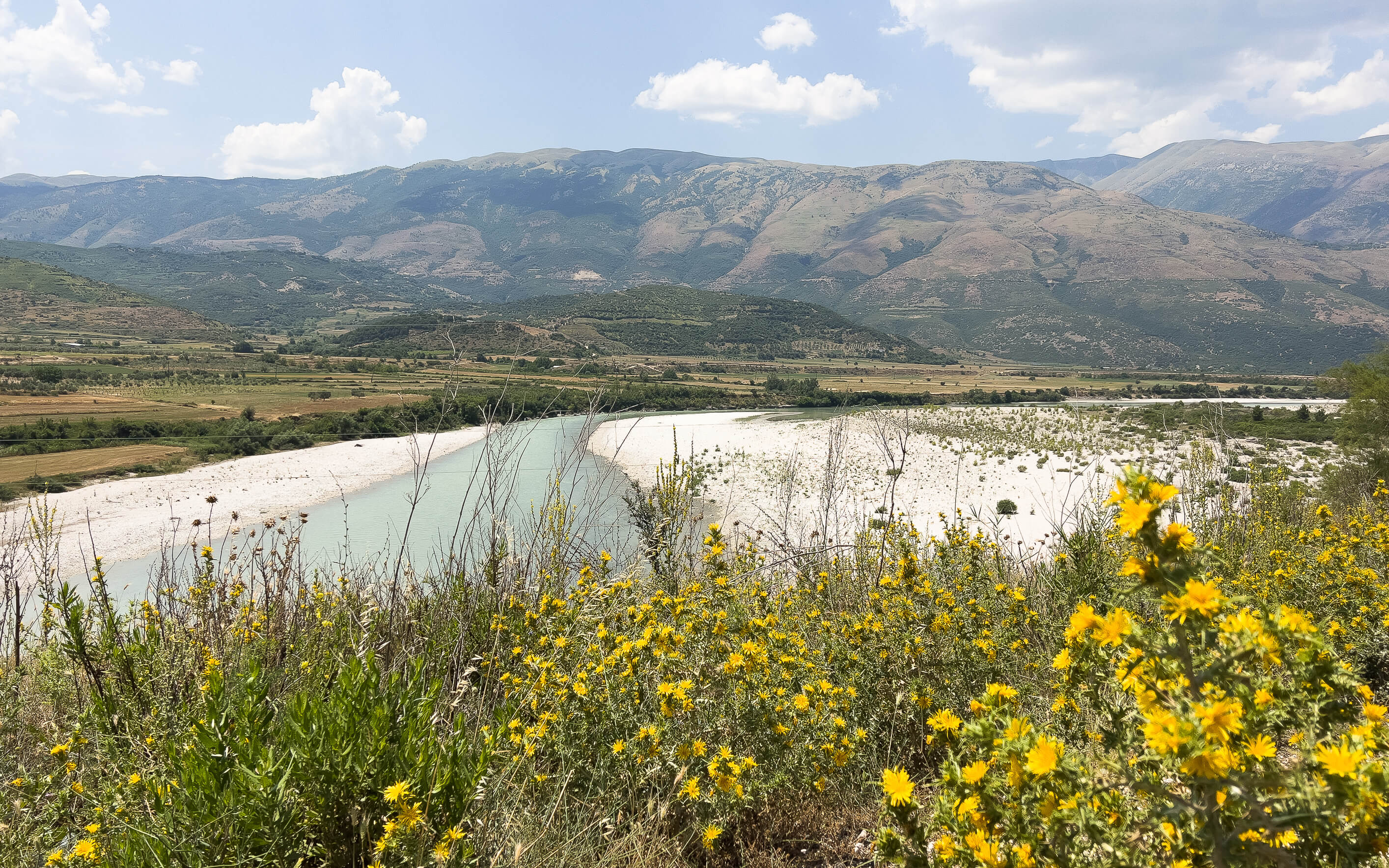
.svg)
Albania is still one of the few countries in Europe that has largely been spared from mass tourism.
This makes it especially appealing: turquoise seas, untouched nature, stunning mountain landscapes, and a fascinating blend of culture and history await you.
Whether you're planning a road trip along the Albanian Riviera, a hike through the Albanian Alps, or a stroll through historic towns like Berat and Gjirokastër – the country offers a wide range of experiences for every type of traveler.
In this post, we've put together some useful travel tips and general information to help you plan your trip to Albania and make the most of your time there.
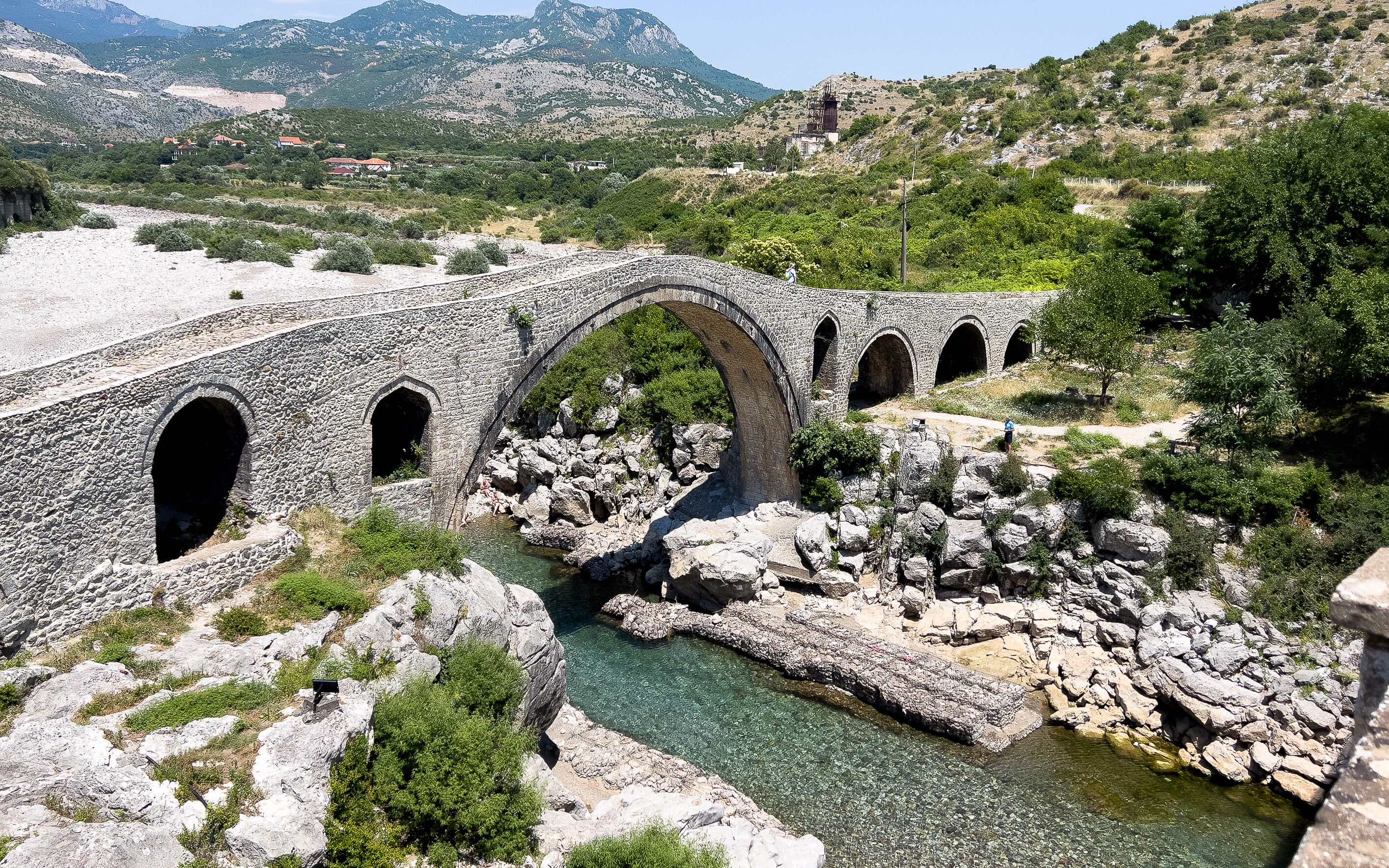
1. BEST TIME TO TRAVEL TO ALBANIA
Albania can generally be visited year-round – the best time to travel depends on what you’re planning to do.
For beach holidays, road trips, or hiking, the months from May to October are considered ideal. During this period, the weather is mostly sunny and dry, especially along the coast.
July and August are the hottest months, with temperatures often climbing above 35°C (95°F).
While perfect for relaxing beach days, these months are less suitable for extensive hikes or sightseeing tours.
Since many European countries have school holidays during this time, it’s high season – especially along the Albanian Riviera.
Still, compared to popular destinations like Italy or Croatia, Albania remains relatively calm and less crowded.
The winter months from December to February are much cooler.
While the coastal areas stay mild, the mountain regions can get quite cold, with snow and freezing temperatures.
This can be appealing to winter hikers and those seeking peace and quiet, but it's not the best season for a classic road trip.
We personally traveled through Albania in mid-June and were surprised by an intense heat wave: daytime temperatures ranged consistently between 35°C and 38°C (95–100°F).
If you're sensitive to heat, traveling with small children, or planning to be active, we recommend aiming for May or September instead.
These months offer milder but still sunny weather – perfect for a relaxed and adventurous trip through Albania.
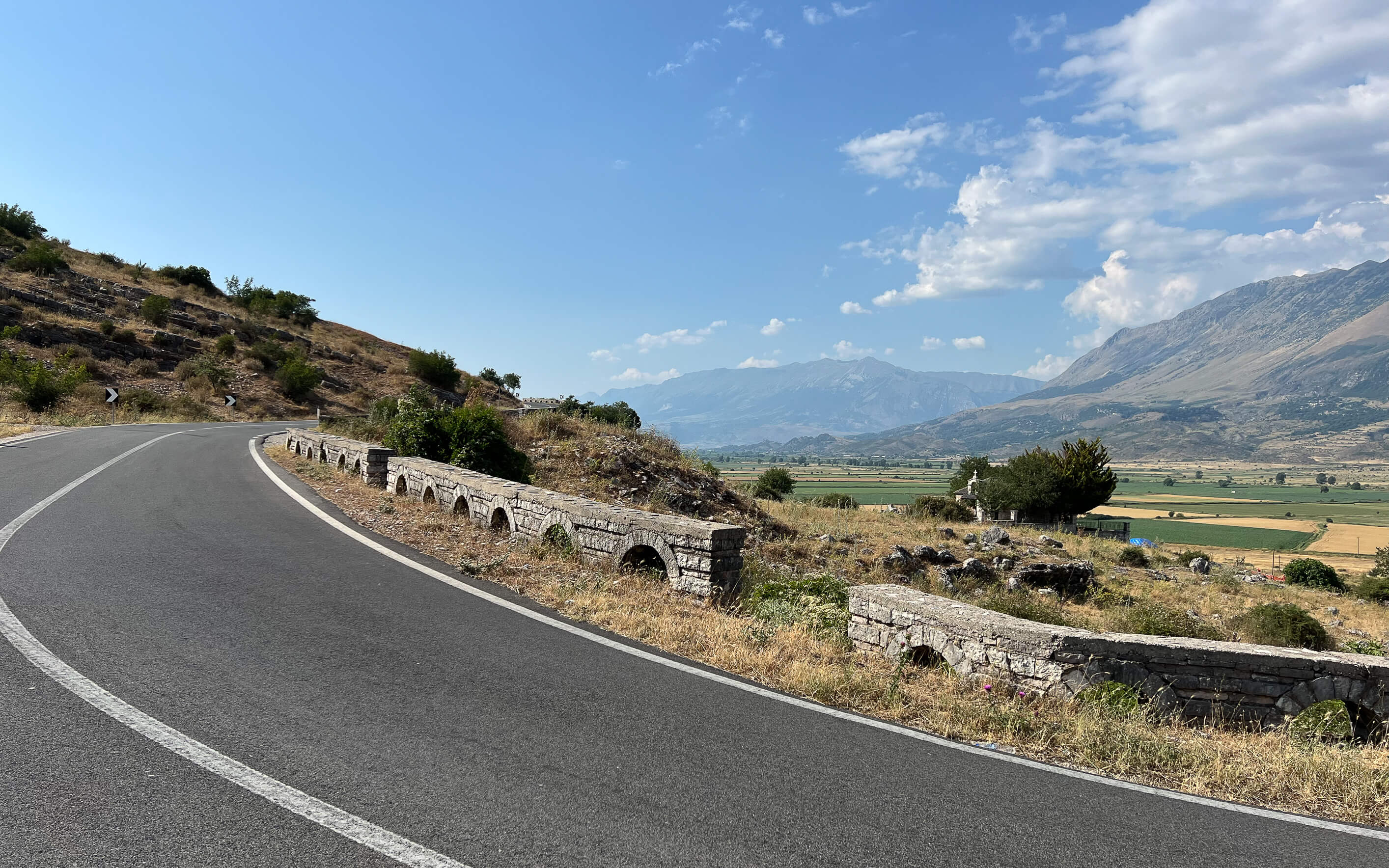
2. HOW LONG TO STAY IN ALBANIA: IDEAL TRAVEL DURATION
How much time you should plan for a trip through Albania depends, of course, on what you want to see and experience.
The country may be small in size, but it offers an impressive variety of landscapes and attractions – from picturesque beaches and historic towns to stunning mountain scenery in the north.
If you're planning a short trip, you can experience some of Albania's highlights in just seven to ten days – for example, a combination of the coast and one or two cities.
For a more relaxed and well-rounded journey, two weeks is ideal.
This gives you enough time to explore the most beautiful places in the country without rushing.
You'll have the freedom to make spontaneous stops, enjoy quiet moments in small villages, or spend a full day at the beach – and that’s exactly what makes traveling in Albania so special.

3. THE OFFICIAL LANGUAGE OF ALBANIA
The official language in Albania is Albanian. Interestingly, Albanian is not only spoken in Albania, but also in Kosovo, parts of North Macedonia, and some neighboring regions.
Although signs and menus are often only in Albanian, tourists usually have no problem communicating in English.
Many young people speak good to very good English, especially in tourist areas but also in smaller towns.
Still, learning a few basic Albanian words for greetings or saying thank you is always appreciated and well received by the locals.
4. TIME ZONE IN ALBANIA
Albania is in the Central European Time Zone (CET), which is UTC+1 during standard time and UTC+2 during daylight saving time (typically from late March to late October).
This means that if you're traveling from most European countries – including Germany, France, Italy, or Switzerland – there is no time difference between your location and Albania, regardless of the season.
For travelers coming from outside Europe, especially from the Americas or Asia, it's helpful to check the current local time in Albania relative to your home time zone.
Keep in mind that Albania observes daylight saving time, so the time difference may vary depending on the time of year.
5. RELIGION IN ALBANIA
Albania is a multi-religious country with a long tradition of peaceful coexistence among different faiths.
The largest religious group is Islam, with about half of the population identifying as Muslim.
There are also Christian communities, including both Orthodox and Catholic believers.
For tourists, religion is rarely noticeable in everyday life.
There are no dress codes or restrictions like in some other countries.
Mosques, churches, and monasteries are often part of the country's cultural heritage and are generally open to visitors, regardless of their personal beliefs.
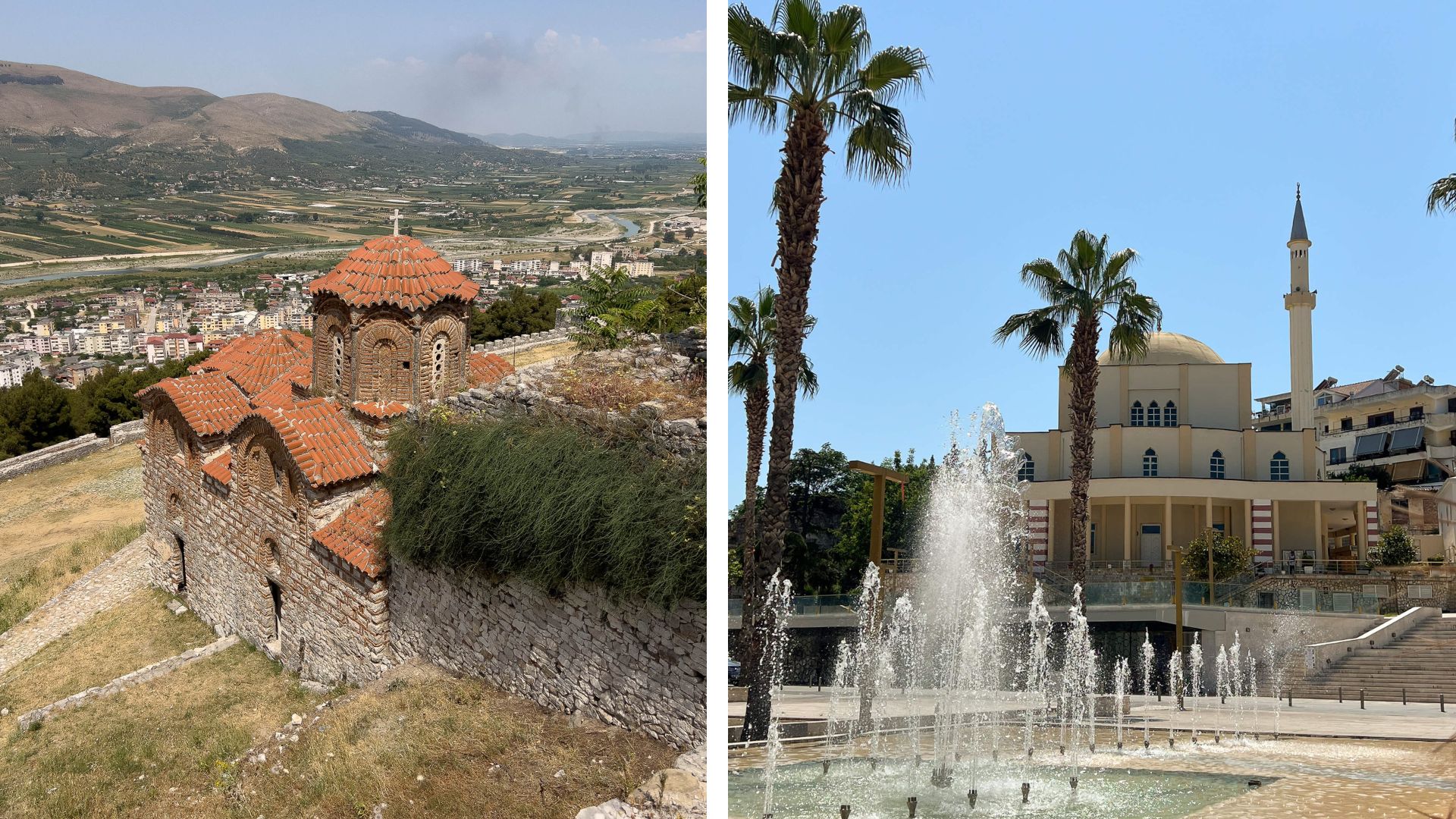
6. CURRENCY AND PAYMENT METHODS IN ALBANIA
The official currency in Albania is the Lek (ALL).
While some hotels and tourist-oriented places may accept euros, it's generally best to pay in lek, as that is the standard currency used in everyday life.
You can easily exchange euro banknotes at currency exchange offices in tourist areas. It's worth comparing exchange rates, as they can vary depending on the provider.
ATMs are widely available in cities and even in many smaller towns.
Withdrawing lek directly in Albania is often more cost-effective than exchanging money at home or at airports.
Fees depend on your bank or credit card provider.
Credit cards are commonly accepted in larger cities, supermarkets, hotels, and many gas stations.
However, in rural areas, smaller restaurants, or guesthouses, it's important to carry enough cash, as card payment might not be available.
Our tip: Avoid exchanging money at currency booths at the airport.
The rates there are usually much less favorable than in the city.
If you need cash upon arrival, it's better to use an ATM – the exchange rate is typically much more reasonable.
7. ENTRY & ADMISSION REQUIREMENTS FOR ALBANIA
Entering Albania is easy and visa-free for many nationalities.
Citizens of countries like Germany, Austria, Switzerland, most EU member states, the UK, the USA, Canada, Australia, and others can stay in Albania for up to 90 days without a visa for tourism purposes.
However, it's always a good idea to check current entry requirements based on your passport nationality before traveling.
To enter Albania, you’ll need a valid passport (in some cases, a national ID card is also accepted, especially for EU citizens).
Your travel document should be valid for at least three more months from the date of entry.
Flights to Albania are frequent and affordable.
Tirana International Airport (TIA) is the main gateway to the country, with regular connections from across Europe.
Budget airlines like Ryanair, Wizz Air, and Eurowings, as well as full-service carriers like Lufthansa and Turkish Airlines, operate flights several times per week.
Flight times vary depending on your departure location:
- From most European cities: 1.5 to 3 hours
- From the Middle East or Central Asia: 3 to 6 hours
- From North America or Southeast Asia (with layovers): 10+ hours
To find the best travel options and fares, use flight comparison tools like Skyscanner.
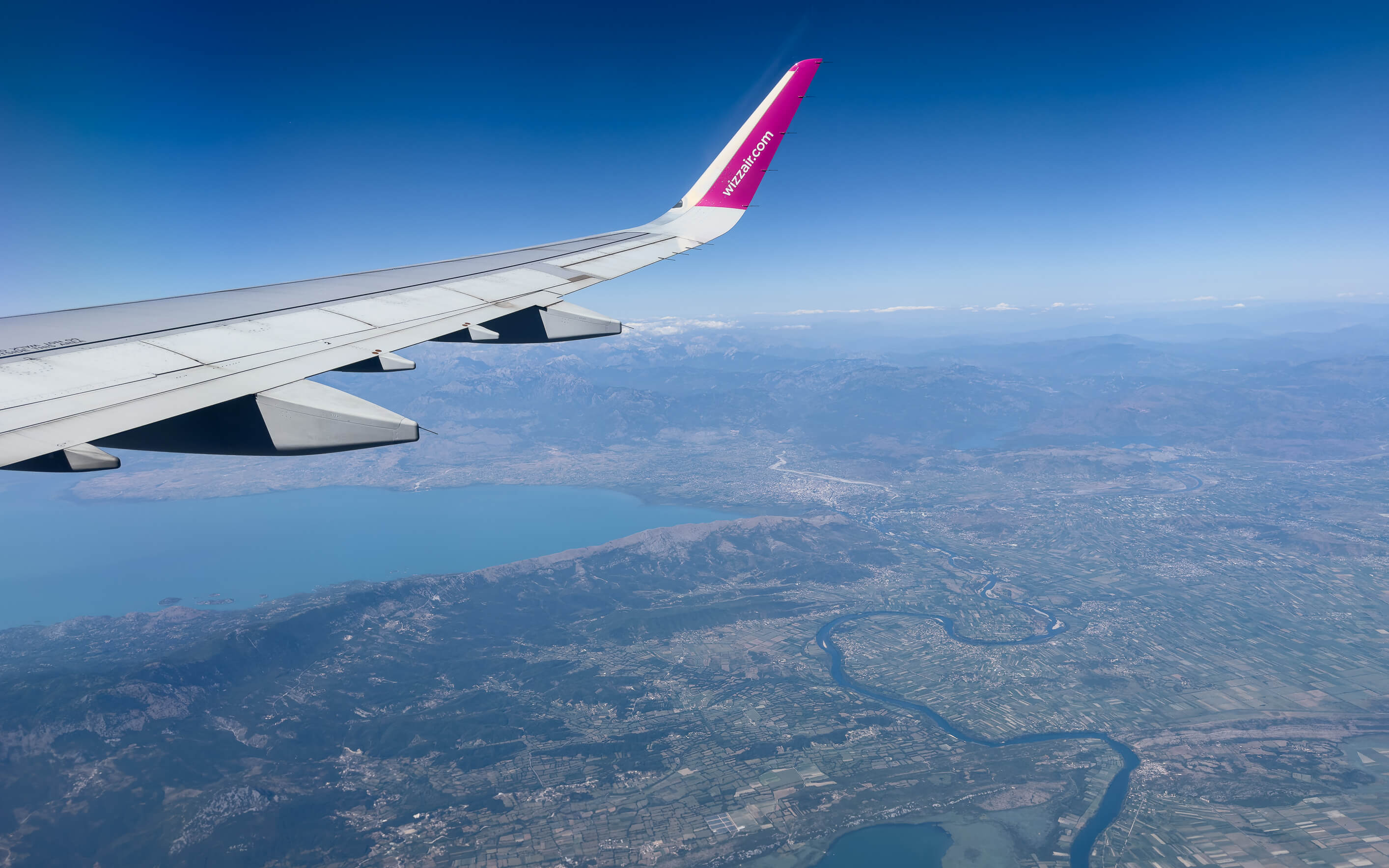
8. GETTING AROUND IN ALBANIA
We generally don't recommend relying on public transportation in Albania, as schedules are often unreliable and many destinations – especially remote beaches or mountain regions – are not accessible by bus.
That’s why we believe renting a car is an absolute must, especially for travelers who want to explore the country independently and with maximum flexibility.
BOOKING A CAR FOR YOUR ALBANIAN ROAD TRIP
We booked our rental car in advance through rentalcars.com, and the process was simple and convenient.
Everything went smoothly at the counter on arrival, so we were able to hit the road right away.
One important note: Make sure that the person who books the car also pays with their own credit card and is the one to leave the security deposit.
Otherwise, you may face extra charges or even be denied the vehicle.
Many rental car providers are located outside the main airport terminal – but don’t worry: they’re usually just a short walk away (around 10 minutes).
These off-site rentals are often much cheaper than the big-name providers located directly at the terminal.
Ours was off-site as well, which wasn’t a problem at all – in fact, we saved quite a bit because of it.
Another important tip when booking: check the opening hours of the rental car office.
If you're arriving very early or late at night, make sure to choose a provider that is open 24/7 or at least offers a flexible late pickup service.
In our case, we were originally supposed to land around 8 pm, but due to a delay, we didn’t arrive until 11 pm.
Our provider officially closed at 10 pm, but luckily they stayed open for us – although they charged a €50 fee per hour after their regular hours.
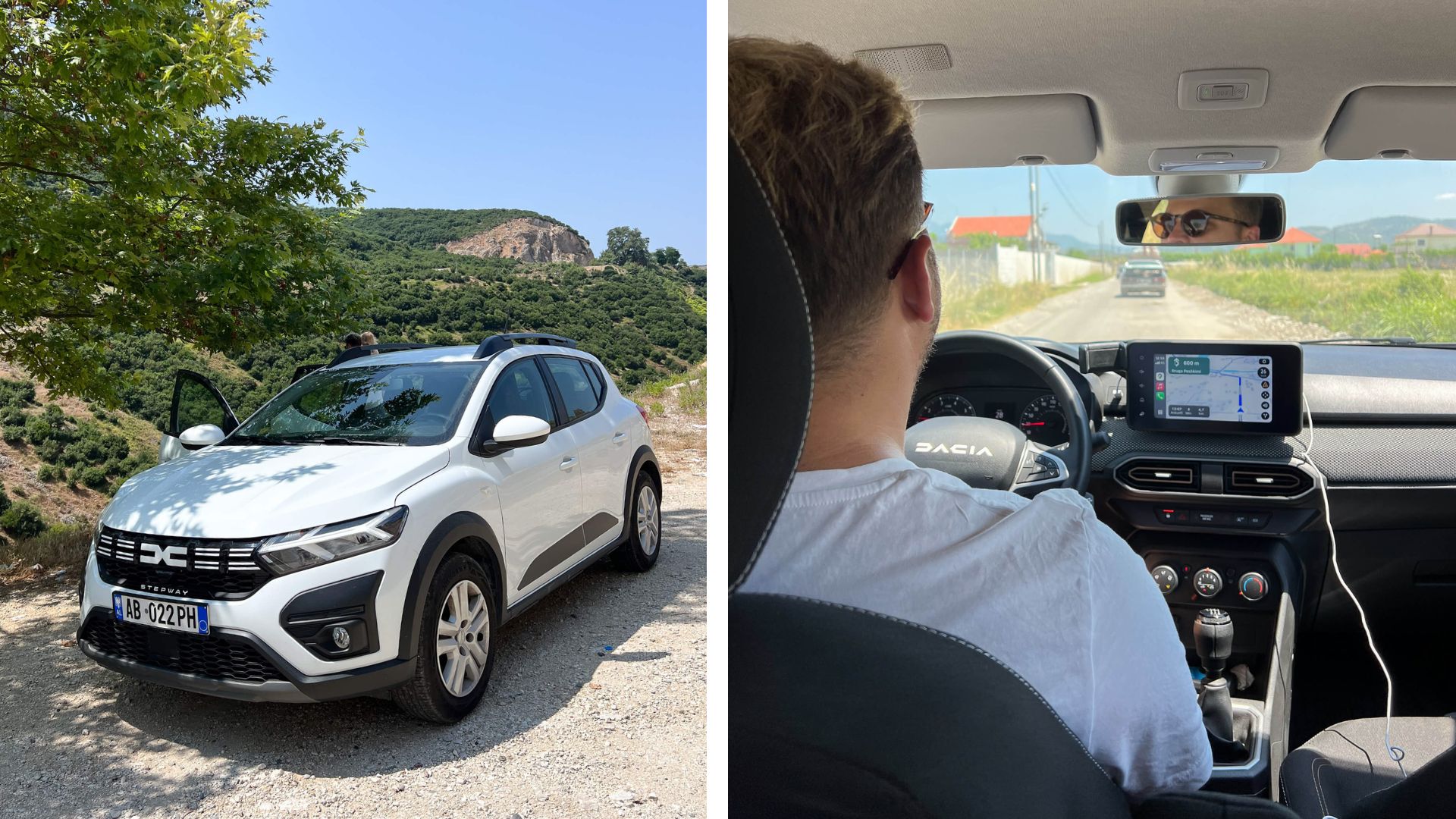
WHAT TO KNOW ABOUT DRIVING IN ALBANIA
Before you hit the road with your rental car to explore the beauty of Albania, there are a few important things you should know about driving in the country:
- Driving Style: Driving in Albania is often a bit more unpredictable and spirited than what many travelers may be used to.
Drivers frequently overtake spontaneously, rarely use turn signals, and traffic rules are not always strictly followed.
In our experience, Tirana was by far the most chaotic: lots of cars, constant traffic jams, heavy honking, and a “drive however you like” atmosphere.
One thing we noticed: many drivers park in the second or even third row just to run a quick errand, which often blocks entire lanes.
Our tip: stay calm and drive cautiously – if you keep your cool, you'll be fine. - Road Conditions: Major roads – such as those connecting Tirana, Durrës, Vlorë, and Sarandë – are in good condition.
In rural areas or the mountains, however, expect narrow, winding roads, potholes, or unpaved gravel sections. - Fueling Up: In Albania, gas stations are typically full service – meaning an attendant will refuel your car for you.
You usually don't need to get out. Card payment is not always available, so make sure to carry cash. Fuel prices are similar to those in Western Europe. - Police & Checkpoints: Police checkpoints are common throughout the country, especially at town entrances, roundabouts, and on rural highways.
We encountered officers using laser speed guns multiple times. So even if locals ignore the speed limits – you shouldn’t. - Alcohol Limit: The legal blood alcohol limit is 0.1‰, which effectively means: don’t drink if you’re driving.
- Navigation: Google Maps works well in most regions, but for remote areas we recommend also using offline maps like Maps.me, as mobile reception can be unreliable.
- Tolls: Tolls are rare in Albania. We only encountered a small fee (about €2 in cash) on the road between Tirana and Shkodër. It’s a good idea to keep some coins handy, just in case.
- Parking: Double parking is common, but it can quickly lead to fines – even without visible warning signs.
Look out for ground markings or ask a local if you're unsure. We got a €6 fine in Sarandë for a spot that seemed free – no signs, no machine, just a ticket on the windshield. - Child Seats: If you’re traveling with children, it’s highly recommended to bring your own child seat.
Although legally required, it’s not strictly enforced – we saw many children sitting on laps. For safety’s sake, better to be prepared.
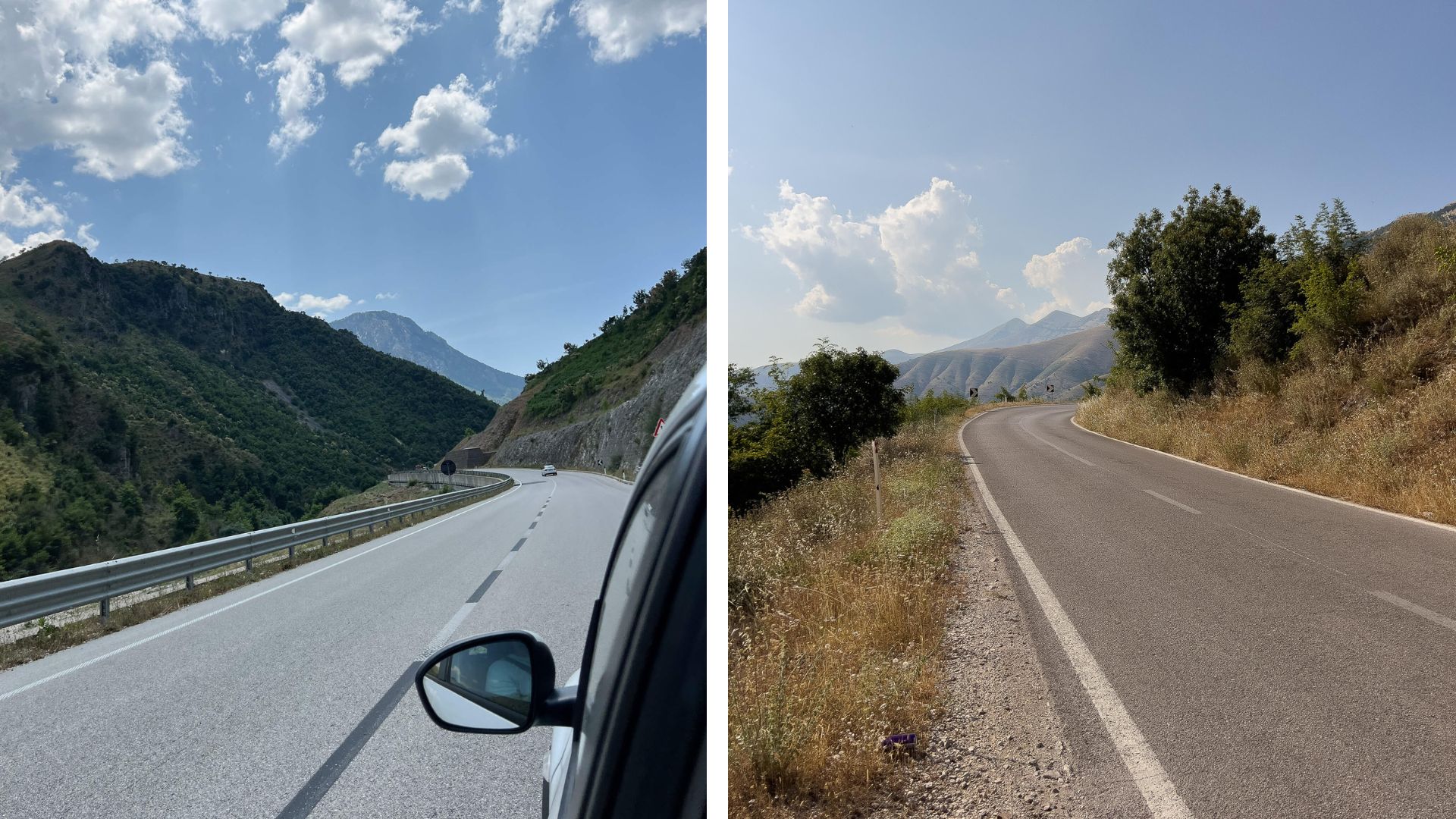
9. HOTELS & ACCOMMODATION IN ALBANIA
Albania offers a wide range of accommodation options – from budget hotels and modern mid-range stays to luxurious all-inclusive resorts.
Self-catering apartments and holiday rentals are also very common and often well-equipped.
The country is currently undergoing rapid development, especially in the tourism sector.
Along the coast, you’ll notice that new hotels are popping up everywhere – a clear sign of the growing infrastructure and rising popularity of Albania as a travel destination.
You’ll easily find the perfect place to stay on platforms like booking.com, whether you’re looking for comfort, affordability, or a specific location.
During our two-week road trip through Albania, we stayed in both hotels and stylish apartments. Here’s a quick list of the most comfortable and memorable places we experienced:
- Durres Vintage Apartment in Durrës
- Green Terrace Apartments Tirana in Tirana
- Seaside Residence in Vlorë
- Blue Eye Hotel in Ksamil
- Vilma Apartment in Berat
- Hotel Ikona in Shkodër
10. ALBANIAN CUISINE: TRADITIONAL FOOD & LOCAL SPECIALTIES
Albanian cuisine is a delicious mix of Balkan, Mediterranean, and Turkish influences – often simple, but full of flavor.
Along the coast, you’ll find plenty of fish and seafood, while the inland regions focus more on hearty dishes with vegetables, meat, and cheese.
One of the most common and traditional foods is Byrek – crispy filo pastry filled with cheese, spinach, or meat.
Other popular dishes include Fërgesë (a baked mix of peppers, tomatoes, and cheese) and Speca me Mazë (mild peppers stuffed with cheese in a creamy sauce).
A typical starter is Tarator, a cold yogurt and cucumber soup.
Fresh salads are served with almost every meal – especially the well-known Greek salad with tomatoes, cucumbers, olives, and feta cheese.
For breakfast, you’ll often find Petulla, deep-fried dough served with jam or honey. Fast food is also common, including burgers and grilled meats like souvlaki.
Eating out in Albania is much cheaper than in Western Europe. A full meal for two, including drinks, often costs no more than €20–30 in many restaurants.
When it comes to drinks, coffee – especially strong espresso – plays a big role in daily life.
Local beer brands like Tirana or Korça are also popular. You’ll frequently be offered Raki, a homemade fruit brandy, in restaurants.
Tap water is not always safe to drink, so it's best to stick with bottled water.
If you're self-catering, you’ll have no problem finding supplies.
Supermarkets and small convenience stores are everywhere.
Some of the most common chains include SPAR, Big Market, Conad, and Eco Market.
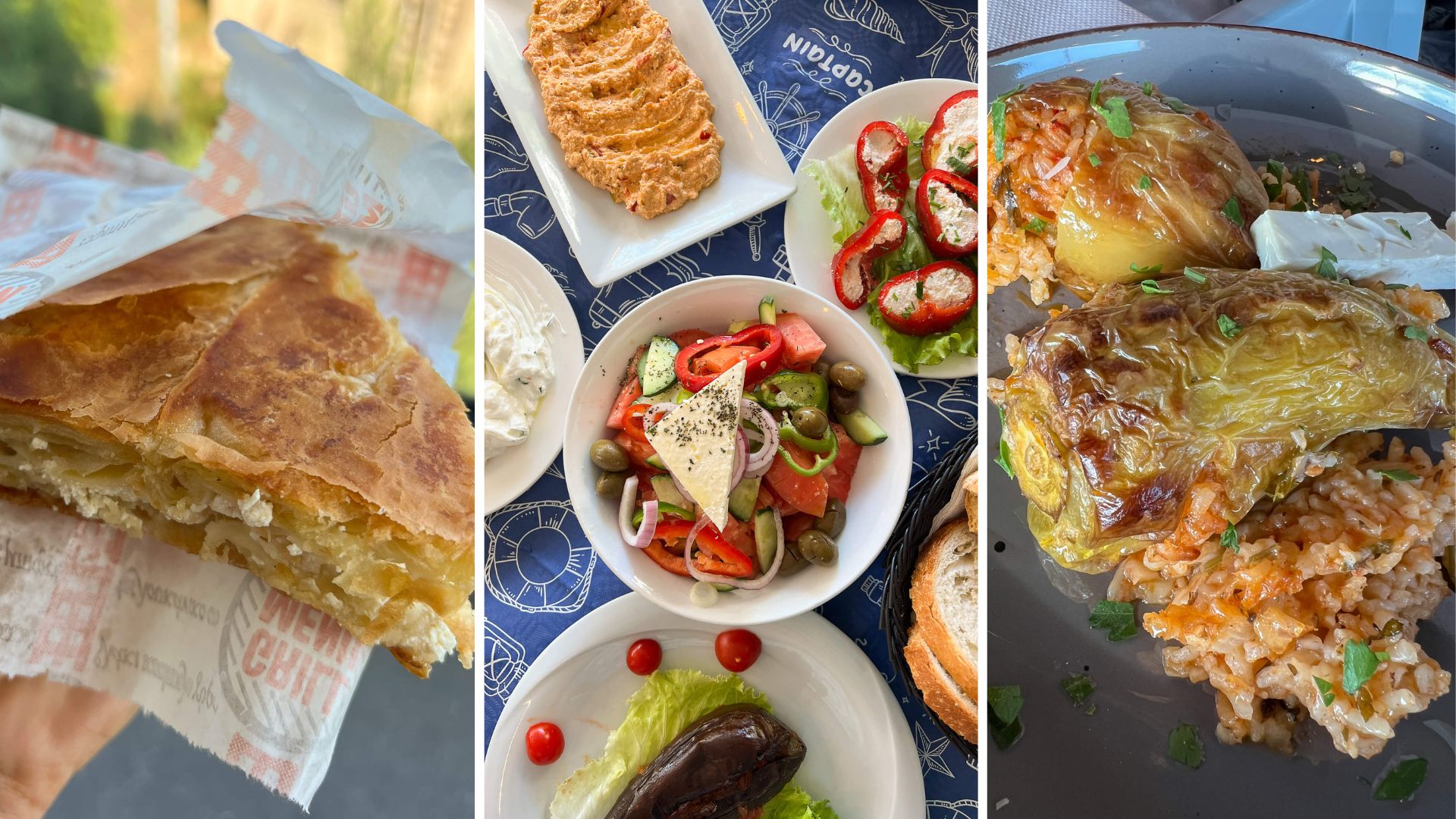
11. DO YOU NEED VACCINATIONS FOR ALBANIA?
No specific vaccinations are required for entry into Albania.
However, for longer stays or travel to rural areas, certain recommended vaccinations include Hepatitis A and Tick-borne Encephalitis (TBE).
For more detailed and personalized advice on vaccinations and health precautions, consult your doctor or travel health clinic, or check the website of your country's foreign affairs or health authority before your trip.
12. INTERNET IN ALBANIA: SHOULD YOU GET A LOCAL SIM?
Getting a local Albanian prepaid SIM card is highly recommended, especially if you’re planning to leave your hotel often or take a road trip around the country.
With a local SIM, you can easily check opening hours, navigate with Google Maps or other apps, use WhatsApp and social media, and of course make phone calls in case of an emergency.
Mobile internet coverage in Albania is generally good and often more reliable than public Wi-Fi.
Providers like Vodafone Albania, One, and ALBtelecom offer affordable prepaid plans with plenty of data.
We bought our SIM card directly at the Vodafone stand at the airport, which was super convenient.
We were online right away and could start navigating with Google Maps after picking up our rental car – quick, easy, and practical.
To purchase a SIM card, you’ll need to show your passport or ID card. Payment can usually be made in cash or by credit card.
If you don’t get a SIM card at the airport, don’t worry – you can visit a provider’s store later. Just search for the nearest location on Google Maps, and you’ll find one easily.
13. TRAVEL INSURANCE FOR ALBANIA
HEALTH INSURANCE
Costs for medical treatment in Albania are not covered by most national health insurance systems.
Therefore, taking out private international health insurance is essential for us.
Some credit cards include private international health insurance.
If that’s not the case for you, we recommend comparing insurance plans on well-known websites like VisitorsCoverage to find the best one for you.
The insurance usually costs a small amount per year, and in an emergency, it’s worth every penny.
Our tip: Make sure to get full coverage with no limit on the amount and that it includes return transportation in case of serious illness!
Also, keep all receipts for medical treatment and prescriptions for medications you paid for upfront to submit them to your insurance or to provide proof.
BAGGAGE INSURANCE
Unfortunately, it can always happen that luggage or valuables go missing during a trip.
That’s why we took out additional baggage insurance for the duration of the trip, especially because of our expensive (technical) gear like cameras, drones, etc.
These insurance plans usually cost a small amount per trip or year and are always worth it in an emergency.
Find and compare the best baggage insurance for you on VisitorsCoverage.
Our tip: Especially for expensive equipment, make sure to get full coverage with no limits!
14. BEACHES IN ALBANIA: WHAT YOU SHOULD KNOW
A large number of beaches in Albania’s popular tourist areas have now been privatized.
This means that beach sections are managed by bars, restaurants, or hotels that rent out sunbeds and umbrellas for a fee.
Prices vary widely depending on the location, beach section, and season.
Especially in places like Ksamil and Sarandë, a multi-day beach holiday during high season can get quite expensive.
At these private beaches, it’s usually not allowed to simply bring your own towel and umbrella and set up. Instead, renting a sunbed is often mandatory.
The few remaining public beaches are usually marked – or you’ll recognize them by the absence of rows of sunbeds and umbrellas.
These spots are in high demand, especially during the summer months. So: arrive early, as available spaces tend to fill up by late morning.
To make the most of your beach day along the Albanian Riviera, it’s worth keeping a few things in mind:
- Bring or Buy Sun Protection
The sun in Albania can be extremely intense during the summer months – so proper sun protection is a must.
Whether you bring a lightweight pop-up tent from home or buy a sun umbrella locally, make sure to protect yourself well, especially if you're visiting a public beach.
You can find umbrellas in supermarkets or from the many street vendors selling beach gear along the coast. - Pack Water Shoes
Albania’s beaches are incredibly diverse – from soft sand to coarse pebbles and rocky shorelines.
Especially on city beaches or stony areas, sharp rocks or even broken glass can pose a risk.
Water shoes offer reliable protection and are especially recommended for children. (You can find a link to our favorite lightweight and practical water shoes here.) - Don’t Forget Towels
Something travelers often overlook: most hotels do not allow their bath towels to be taken to the beach, and vacation rentals often don’t provide beach towels at all.
We brought our lightweight microfiber towels from home – compact, quick-drying, and perfect for the beach.

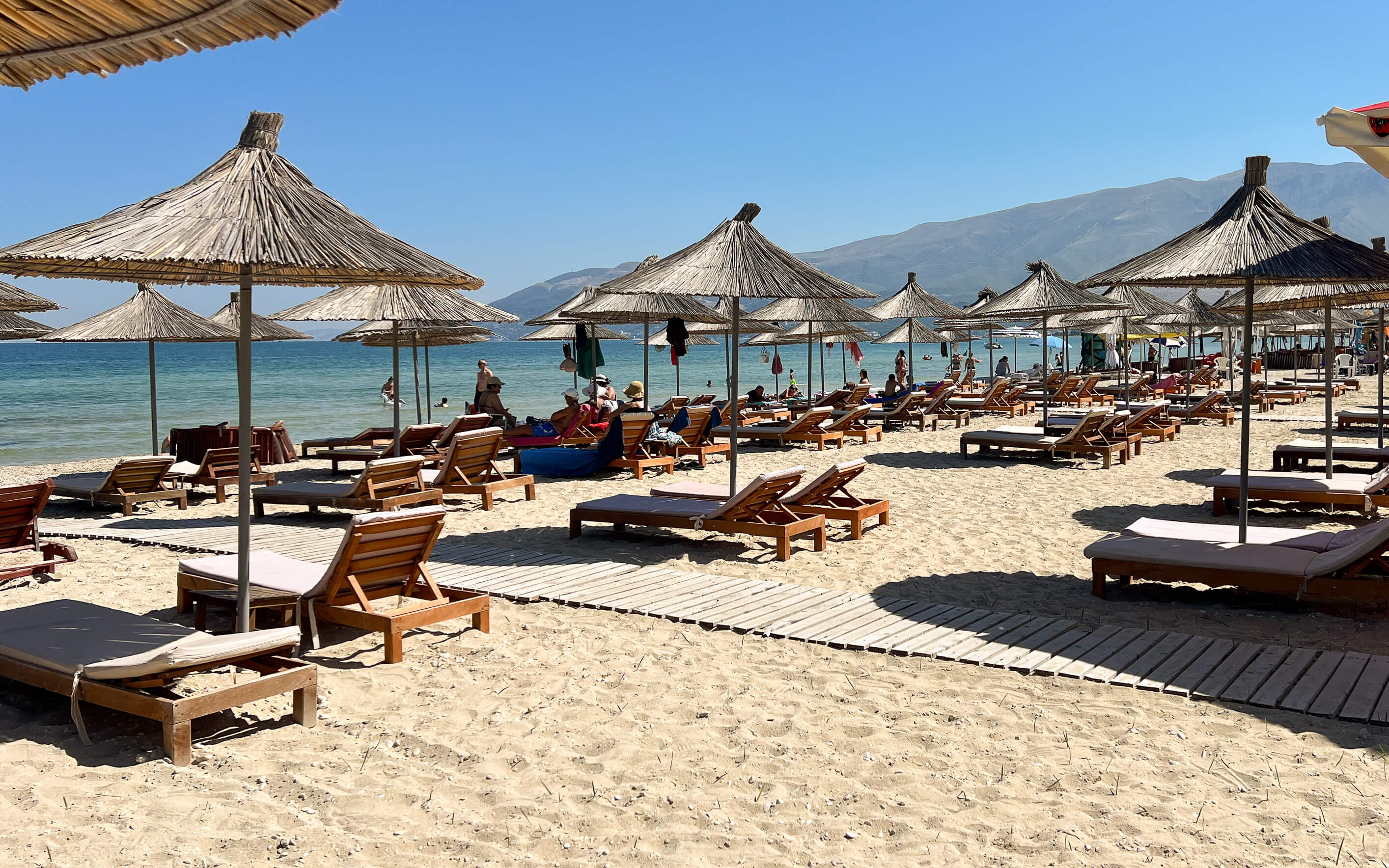
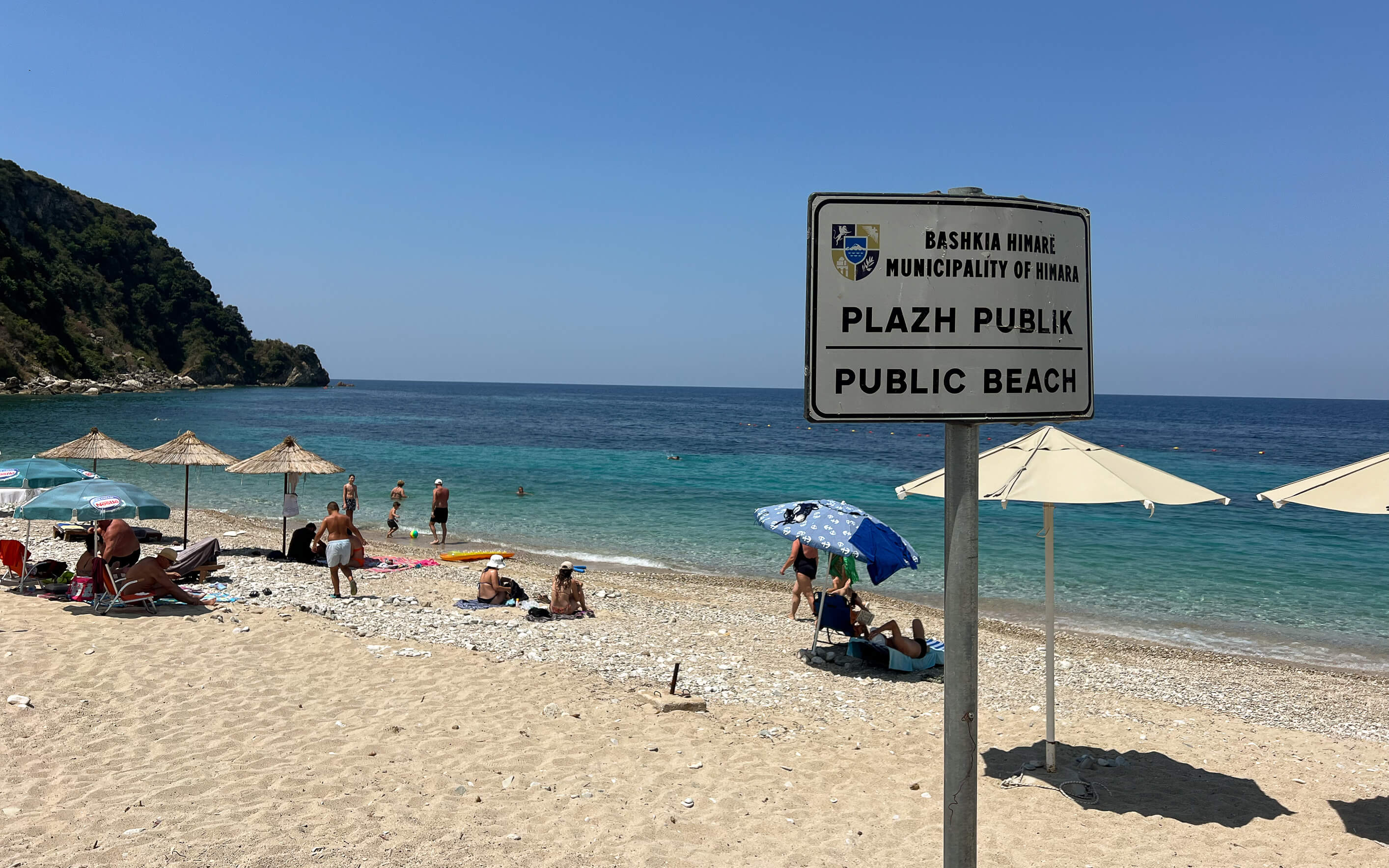
15. ALBANIA & THE TRASH PROBLEM
One negative aspect that stood out during our trip to Albania was the serious trash problem.
Away from the postcard-perfect beaches of Ksamil and other popular tourist spots, we frequently came across litter and waste – along roadsides, in natural areas, and especially in less-developed or non-touristy regions.
Although a public waste management system does exist, it’s very different from what many travelers may be used to in places like Germany or Western Europe.
There are no individual bins at each home. Instead, residents bring their trash to central collection points located throughout towns and villages.
Unfortunately, a lot of waste still ends up where it doesn’t belong. Illegal dumping, especially along roadsides, is a common sight.
The growing tourism industry has only made the issue worse, and the current infrastructure doesn’t yet seem equipped to handle the increasing demand.
Overall, we felt that awareness around environmental and sustainability issues is still in its early stages in many parts of the country.
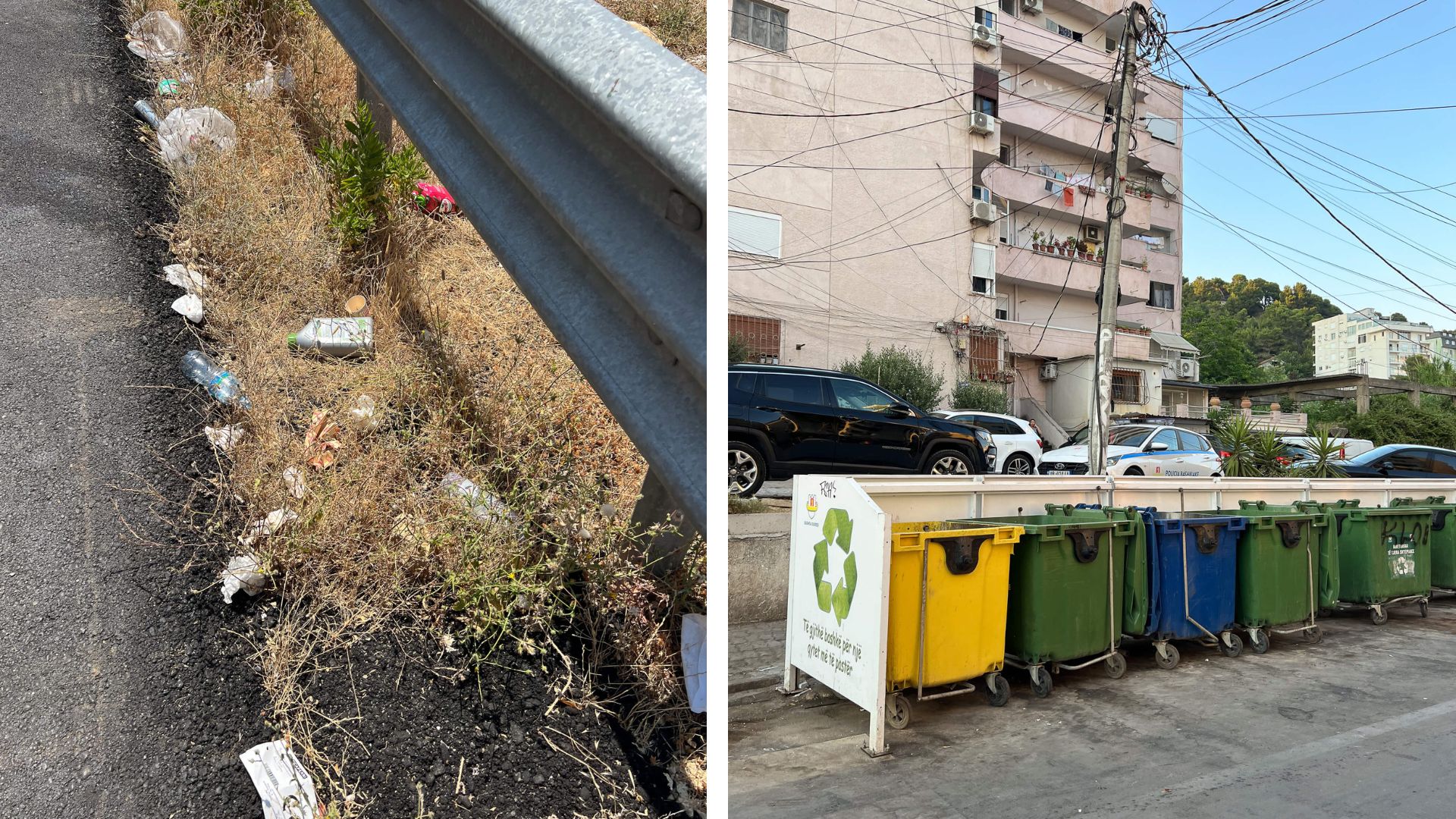
16. STRAY DOGS & CATS IN ALBANIA
One thing that really stood out during our trip through Albania was the large number of stray dogs and cats.
In many towns and villages, you’ll frequently encounter them – often searching for food or a shady spot to rest.
Most of the animals are friendly and non-aggressive, but their lives are marked by uncertainty.
Some are fed by locals, while others are entirely left to fend for themselves.
At present, there is no widespread neutering or protection program in place.
While small organizations and dedicated volunteers do what they can, funding and government support are limited.
For animal lovers, seeing so many strays can be emotionally challenging – and it’s a reminder of how differently animals are treated around the world.
If you’d like to help, you can support local animal welfare initiatives or make small gestures during your trip – like offering water, food, or even just a moment of kindness.
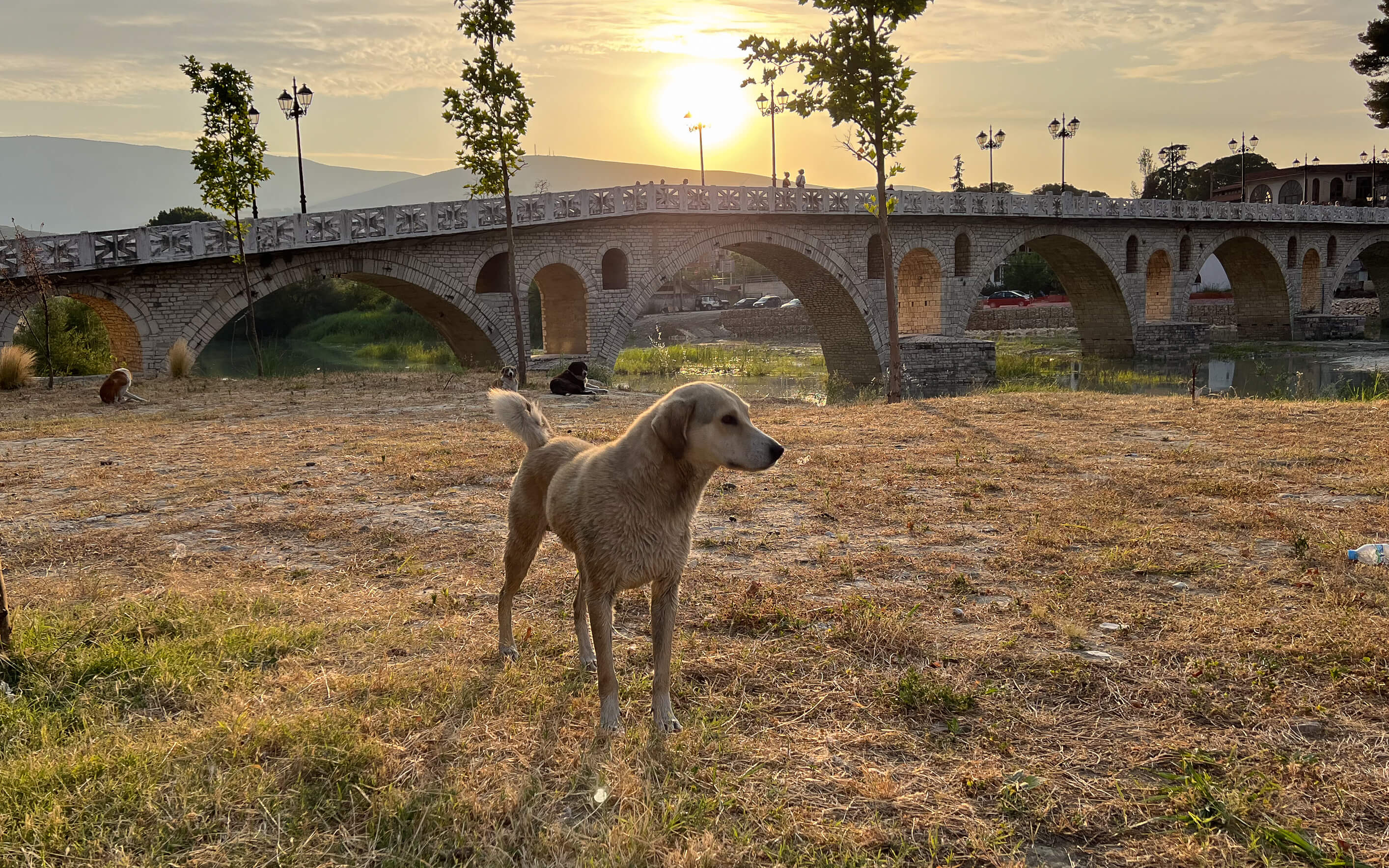
THIS POST WASN’T ENOUGH FOR YOU? YOU’RE LOOKING FOR MORE TIPS, INSPIRATION AND SIGHTS FOR YOUR TRIP TO ALBANIA? THEN MAKE SURE TO CHECK OUT OUR FOLLOWING POSTS:
- Traveling to Albania with a Baby or Toddler – Tips, Useful Information & Our Experience
- Albania Road Trip with a Baby or Toddler – Itinerary, Practical Tips & Our Experience
USEFUL LINKS & RECOMMENDED TRAVEL GUIDES FOR YOU
- Discover the best accommodations
- Find affordable flights at skyscanner.com
- Find affordable rental cars at rentalcars.com
- The best Travel Guides for Albania
- Unique Excursions to Experience in Albania
Note: This blog post contains our personal recommendations in the form of so-called affiliate links. If you book or purchase something through these links, we earn a small commission. There is absolutely no change to the price for you.

.svg)
.svg)
.svg)



